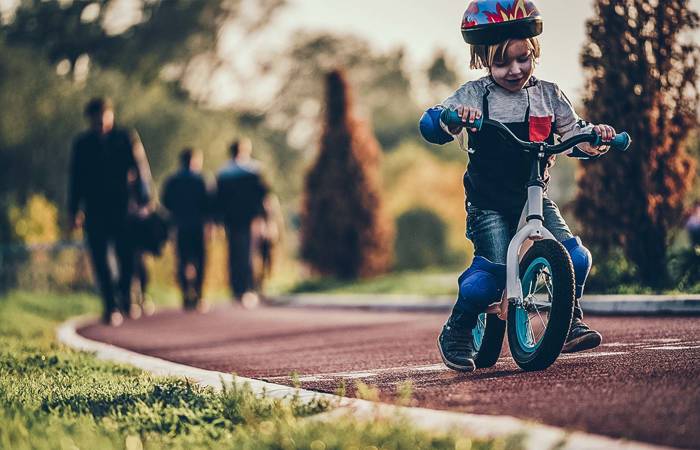Like what you see?
Sign up to receive more free parenting advice.
Thank you for subscribing to our newsletter!
Child Development
Video Gallery
See all videosThe benefits of active play for children - Sue Robb OBE
We often hear calls for the need for children to be more active, but what does that mean for our infants, toddlers and pre-schoolers? As adults we play organised sport, run or go to the gym, but physical activity for our young children means a focus on movement and active play. But why is this important?
The benefits of active play for children - Sue Robb OBE
We often hear calls for the need for children to be more active, but what does that mean for our infants, toddlers and pre-schoolers? As adults we play organised sport, run or go to the gym, but physical activity for our young children means a focus on movement and active play. But why is this important?
We often hear calls for children to be more active, but what does that mean for our infants, toddlers and pre-schoolers?
As adults we play organised sport, run or go to the gym, but physical activity for our young children means a focus on movement and active play. But why is this important?
Physical activity helps improve confidence and self-esteem and develops healthier social, cognitive, and emotional skills. It also builds strength, concentration, and coordination.
The compelling case for fitness
The evidence is clear in that when we do not think about physical activity in the early years, children can become inactive. Inactive children are more likely to be overweight and or obese at a young age.
It is also known that lower fitness levels in children are linked to lower academic outcomes. We also know that as these young children become adults they are more likely to earn less, have high health-related costs, are sick more often, are more likely to be obese as adults and have a decreased life expectancy.
This makes a very compelling case for young children to be physically active.
Tracking Physical Activity and Sedentary Behaviour in Childhood - A Systematic Review by Dr Rachel A. Jones and colleagues further supports the importance of physical activity and movement play from a young age.
The team conducted a systematic review of 11 papers that looked at tracking physical activity and sedentary behaviour over time.
The results of this review showed quite clearly that those children who were more active in the preschool years remained more active in primary school and those that were less active in the preschool years remained less active in the primary years.
The review concluded that early childhood should be targeted as a critical time to promote healthy lifestyle behaviours.
Australian Institute of Health and Welfare research found that in 2017–18, around 1 in 4 (24%) children aged 5–14 were overweight (17%) or obese (7.7%). The proportion of children overweight or obese remained relatively stable between 2007–08 (23%) and 2017–18 (24%).1
In 2017–18, more children aged 5–14 were overweight or obese in regional and remote areas (29%) than in major cities (23%); in single-parent families (29%) than children living in two-parent families (23%); or if they had disability (30%).2
A physically active child is not spending long periods of time in front of a screen, or seated in a chair, pram or stroller.
For infants this might mean plenty of floor-based activity including tummy time to strengthen the muscles later needed for crawling.
Once a child is mobile their activity will probably come from walking, running, learning to ride a bike and swimming.
Outdoor and nature play provide wonderful opportunities to expose children to creative and imaginative play away from screens and conventional manufactured play equipment.
Penny Greenland, Director of JABADAO, The National Centre for Movement, Learning and Health says, “Missing out on early movement play is like missing the foundations of a house – you never know what cracks and problems may appear later on.”
Ways to keep your child active
The evidence is clear. Young children need to be physically active and by that it means the heartbeat being raised. There are so many ways that this can be achieved:
- Simply running along a beach chasing the waves
- Running around a garden or park chasing butterflies
- Throwing bean bags/ balls into baskets
- Bat and ball games
- Hopping
- Skipping without and with a rope
- Balancing on a low edge/wall
- Dancing
- Circle games
1 https://www.aihw.gov.au/reports/children-youth/australias-children/contents/health/overweight-and-obesity
2 https://www.aihw.gov.au/reports/children-youth/australias-children/contents/health/overweight-and-obesity
Physical and sedentary guidelines
Given the importance of physical activity in the early years a number of organisations across the globe have developed physical and sedentary guidelines for children under five years of age.
These guidelines have been developed in Australia, Canada and the UK to name a few countries and have been endorsed by the World Health Organisation.
Guidelines for healthy growth and development for your child3
Babies (infants) under 1 year of age:
- Physical activity: Being physically active several times a day in a variety of ways, particularly through supervised interactive floor-based play, including crawling; more is better. For those not yet mobile, this includes at least 30 minutes of tummy time, which includes reaching and grasping, pushing and pulling, spread throughout the day while awake;
- Sedentary behaviour: Not being restrained for more than 1 hour at a time (e.g., in a stroller, car seat or high chair). Screen time is not recommended. When sedentary, engaging in pursuits such as reading, singing, puzzles and storytelling with a caregiver is encouraged; and
- Sleep: 14 to 17 hours (for those aged 0–3 months) and 12 to 16 hours (for those aged 4–11 months) of good quality sleep, including naps.
Toddlers (1–2 years):
- Physical activity: At least 180 minutes spent in a variety of physical activities, including energetic play, spread throughout the day; more is better;
- Sedentary behaviour: Not being restrained for more than 1 hour at a time (e.g., in a stroller, car seat or high chair) or sitting for extended periods. For those younger than 2 years, sedentary screen time is not recommended. For those aged 2 years, sedentary screen time should be no more than 1 hour; less is better. When sedentary, engaging in pursuits such as reading, singing, puzzles and storytelling with a caregiver is encouraged; and
- Sleep: 11 to 14 hours of good quality sleep, including naps, with consistent sleep and wake‑up times.
Pre-schoolers (3–5 years):
- Physical activity: At least 180 minutes spent in a variety of physical activities, of which at least 60 minutes is energetic play, spread throughout the day; more is better;
- Sedentary behaviour: Not being restrained for more than 1 hour at a time (e.g., in a stroller or car seat) or sitting for extended periods. Sedentary screen time should be no more than 1 hour; less is better. When sedentary, engaging in pursuits such as reading, singing, puzzles and storytelling with a caregiver is encouraged; and
- Sleep: 10 to 13 hours of good quality sleep, which may include a nap, with consistent sleep and wake‑up times.
3 Australian Government. Department of Health: Australian 24-Hour Movement Guidelines for the Early Years (birth to 5 years): An Integration of Physical Activity, Sedentary Behaviour, and Sleep










